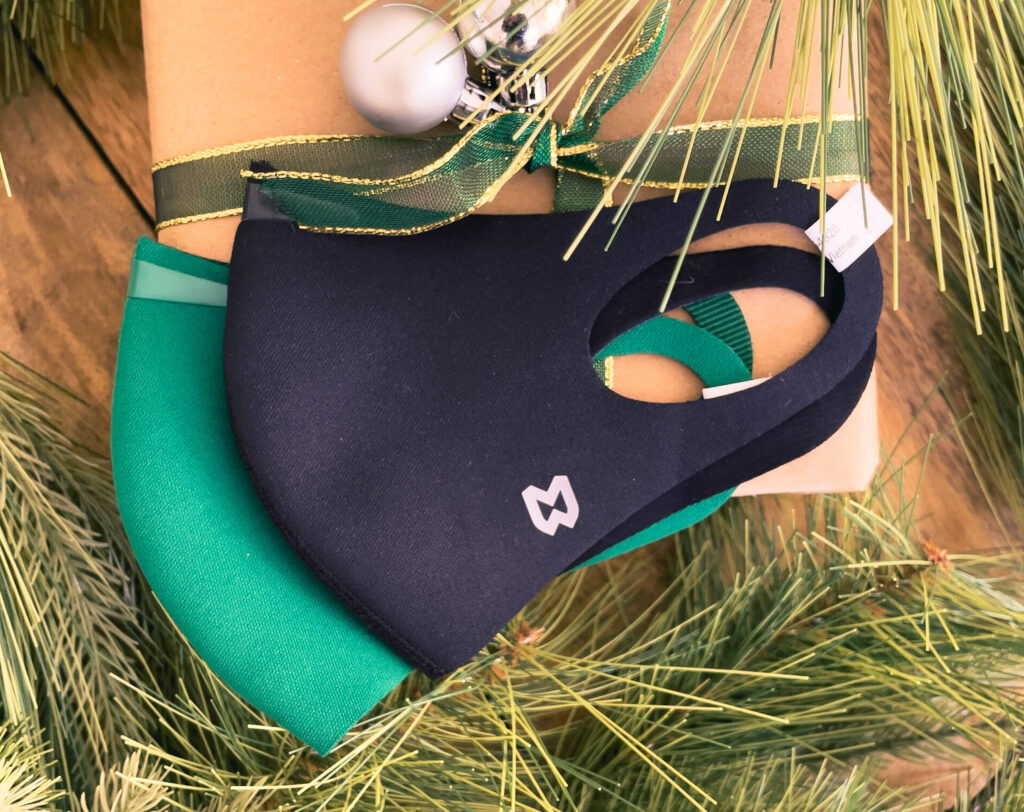Considering Working from Home?

Sometimes, with disabilities or chronic illness, a traditional job in an office or other setting isn’t possible. It could be a situation such as the hours, the atmosphere, or even the lighting in the building. Many who…
Best Part of Waking Up… Morning Assessment

You ever see those Folgers commercials where the sun is shining through a bedroom window. The person wakes up and stretches their arms with a big smile on their face. They smell that delicious coffee aroma coming from …
Never Give Up, Never Surrender

If you get the Galaxy Quest reference to the blog title, you are my kind of nerdy people!
Why does this momma have so many businesses?

I’ll make the gooey, mushy, terrible, horrible of my life short and sweet. I’m sure it’ll come up in a later blog post, but let’s just break it down.
The Ultimate Guide to FSA/HSA Spending Accounts
At Mighty Well, our goal is to make our products accessible to our community. That is why we accept Flexible Spending Account (FSA) dollars to purchase Mighty Well products! For those who have FSA/HSA benefits, you use it just as you would a credit card at checkout. If you’d rather use your regular credit card, you can email us for an itemized receipt to file a claim. Check with your family’s primary insurance holder to see if you have this benefit.
It is important to note that your insurance plan/provider determines reimbursements. While most Mighty Well products are eligible, your insurance provider has the final say in whether or not you will be reimbursed. Mighty Well does not have control over what insurance providers deem as eligible for reimbursement.
Below is a simple-to-understand guide on how to use FSA/ HSA funds before the end of the year:
You can save a lot of money on healthcare by using FSAs and HSAs accounts. Many people often need help knowing when and how to use these accounts once they’ve set them up. The good news is they can be used for a variety of out-of-pocket healthcare costs, such as:
- Over-the-counter (OTC) products like Mighty Well’s PICCPerfect®, Self Care Case, Fluid Motion Backpack, and Masks
- Medical testing
- Copayments
- Deductibles
- Prescription drugs
Since it’s the end of the year, here’s a small reminder of what FSAs/HSAs are, who’s eligible, and how they help you save money.

HSA vs. FSA: What’s the difference?
HSA: Healthcare Savings Accounts
- This is a tax-advantaged account to be used only for healthcare expenses
- It can be rolled over in its entirety from year to year. Applicants must have a high-deductible health plan that covers at least $1,400 for individuals and $2,800 for families
- Enrollment in an HSA is done via an employer or private insurance
- You can contribute to a health savings account with pre-tax dollars, which reduces your taxable income
FSA: Flexible Spending Accounts
- Similar to HSA, but less flexible
- This is only offered as an employee benefit, and it doesn’t come with you when you change jobs
- The IRS has set a $3,650 maximum contribution to an individual FSA and a $7,300 maximum contribution to a family HSA for 2022
- This is the more common type of account
- Younger, healthier people tend to be more conservative about their FSA allotment than people with chronic conditions that require ongoing treatment
Do I Lose my FSAs Dollars At the End of Each Year?
Unfortunately, Yes. Different from HSAs, unused balances in FSA accounts don’t usually roll over into the following year. You will forfeit any unused funds unless offered a grace period or your employer’s FSA plan explicitly allows a rollover. Just know the IRS limits this rollover to $570. For this reason, it is essential to consider how you contribute to an FSA based on your estimated medical expenses.

What does an FSA/HSA cover exactly?
There are subtle differences between individual plans for each FSA and HSA account. Frequent uses of the account are out-of-pocket medical, dental, and vision expenses, including deductibles, copays, and prescription medication. They also cover any number of OTC medicines, devices, and products, including several products from Mighty Well. Insurance premiums are not covered by FSA/HSA accounts.
Use your FSA or HSA card mightywell.com to take advantage of your benefits!
Living with illness and disability can be isolating. Thankfully, it doesn’t have to be. Sign up below to be in the know on our latest product and content releases, exclusive offers, and community events.
The post The Ultimate Guide to FSA/HSA Spending Accounts appeared first on Mighty Well.
Resource Guide to Conquer Life With a Feeding Tube
New to the world of feeding tubes? Looking for some feeding tube resources? Here are our favorites to get you going:
Understanding the types
Before needing a feeding tube, you may not have known that there are several different types! Each one is used for different purposes. To understand the different names, here’s what you need to know:
The first part of your tube’s name refers to where the tube enters your body. Naso means it enters through the nose, oro means it enters through the mouth, and percutaneous means through the skin. Percutaneous endoscopic tubes require surgery to put a hole through the skin in the abdomen and are placed using an endoscopy, or a camera inserted through a tube in the esophagus. Naso and oro tubes do not require surgery.
The second part of the name refers to where the tube empties into – gastro into the stomach, jejunal into the small intestine, and gastro-jejunal into both.
Since these names can be a mouthful, most people go by their acronyms, such as G-Tubes and J-Tubes, PEG or NG, PEG-J, etc.
If you want a closer look at the different types of tubes, their uses, and how to choose what’s right for you, this blog breaks down each one in detail.
Support, advocacy, and information
Support for any chronic condition or medical device is crucial for your well-being! It’s important to nurture the relationships you already have in place and communicate well so that those in your life understand your condition and can be supportive. Letting them know, for example, how you feel about them eating around you and how your feeds work can help relieve tension during social visits. It is also helpful, though, to find a community of others who already understand. Tubie support groups can be great for making friends who don’t require food to socialize, can empathize when things feel tough, and have plenty of tips to make your experience easier! You can find groups on Facebook and other forums by searching for what you are hoping for, such as this group for adults with feeding tubes.
Tubie tip: pay attention to whether groups are private, monitored by admins, and have group rules that you jive with. You want a group that is respectful of privacy, helpful, supportive, and positive. Learn more on support groups here.
Advocacy organizations, such as the Oley Foundation and Feeding Tube Awareness Foundation, can help you find in-person support groups and are chock-full of other resources such as patient information, ways to advocate and further research, and tried-and-true solutions to challenges you may encounter.
Kate Farms also offers patient advocates for free! These can support you in talking to medical providers, home health caregivers, medical suppliers, and insurance providers.
Essential feeding tube products
Because so many people live with feeding tubes, helpful products are plentiful! The critical ones are:
- Feeds
- Pumps
- Carrying Bags
Don’t be afraid to try out different types of feeds to figure out what your body best tolerates. You can call the hospital ahead of time to find out what they have available, and some companies (like Kate Farms) can send you free samples. Your hospital will supply you with a pump, but if it doesn’t work for you (too heavy, for example), don’t be afraid to ask for other options. Perhaps the most important piece of equipment is your bag – a good feed bag can hold all your supplies, keep things contained and organized, and allow you the freedom to get nutrition on the go. Finding one that isn’t too bulky and fits your style will also help you feel your best self!
Tubie tip: If you are thinking of something that would make your tube life better, probably someone else has already created it! Sites like Etsy and Pinterest have tons of DIY ideas and patient-made products available for feeding tubes.
For our full list of products (and where to find them), check out our gear guide here.
Avoiding feeding tube complications
Feeding tubes can be lifesavers, but they can also come with complications. Tubes can get clogged, pulled or dislodged, irritated, and infected. To avoid these complications, it is important to keep your tube secure and the stoma (for percutaneous tubes) clean and dry. Use clips and belts to keep everything in place. Wash your hands before touching, wash the stoma, and keep it dry and open to the air. The Feeding Tube Awareness Foundation has a wonderful “troubleshooting” section (here) for these and other complications that may come up.
Click here for our full blog on care and complications.
Self-love with a feeding tube
Finally, it’s important to nurture your sense of self and find self-compassion! Feeding tubes alter how we look, how we eat, and how we interact with others. But over time these changes should be positive – restoring the health, strength, and confidence you need to live your life to its fullest. In the meantime, be kind to yourself as your body adjusts. This could mean practicing a gratitude journal – writing down a few things each day that you are grateful for. This also means still socializing and getting out of the house (check out on-the-go tips here). Wearing clothes that feel like you, in addition to being practical, can help. Zip-up or swing-style shirts are a good option here, and some clothing companies now offer tube-friendly clothes (and even Halloween costumes)! Find ways to shift how you view your scars and the parts of your tube that are visible. Cute products can help, as well as following people on social media who are proud of their tubes. And, as always, surround yourself with people (loved ones and support groups) who will show enough love to remind you to love yourself!
Other resources
- www.Oley.org
- https://www.feedingtubeawareness.org/
- https://www.carewell.com/enteral-feeding-guide/
- https://www.friendshipcircle.org/blog/2017/02/10/online-resources-parents-children-who-need-feeding-tube/
- https://www.feedingmatters.org/
- http://tubefedkids.ning.com
Living with illness and disability can be isolating. Thankfully, it doesn’t have to be. Sign up below to be in the know on our latest product and content releases, exclusive offers, and community events.
The post Resource Guide to Conquer Life With a Feeding Tube appeared first on Mighty Well.
5 Gift Ideas for Your Friends With Chronic Illness
With the holidays right around the corner, you may be wondering what gifts to get for your friends with chronic illness. We’ve put together our annual gift guide to help you out!
1. clutter-free
In this second year of spending too much time at home, many people have realized just how cluttered their spaces are! Receiving a pile of gifts brings connection and warmth to these cold winter months, but can also bring a sense of overwhelm for the givers and clutter for receivers. If this resonates with you and your loved ones, consider a used gift swap! Each of you go through your belongings and determine what is no longer bringing you joy. Trash what isn’t useful anymore, and then bring what’s left to the swap! Each of you gets to keep whatever you want from the discarded items, and then donate the rest. You may be surprised at the number of things you have that are still in good enough condition to bring someone else joy, even though you have lost interest. Through this process, all of you are decluttering and therefore bringing yourselves more peace of mind, gifting items, and donating to others. What a beautiful way to celebrate what the holidays represent!
If you have trouble letting go of things, you could check out Marie Kondo’s practice of acknowledging the meaning your things have had before releasing them.
2. disability pride
Ever since the Americans with Disabilities Act (ADA) was passed in July of 1990, the disability community has celebrated its value, diversity, and activism in the month of July. This July, Disability Pride Month received a lot of attention. Thousands of people got outside for events or celebrated virtually, posting on social media about their experience with disability. This uptick in participation and visibility was largely due to the impact COVID-19 has had on people with disabilities. If you know someone who celebrated Disability Pride Month, consider getting them a gift that shows you understand that disability and chronic illness do not need to be sources of shame. You could get stickers, pins, and patches to spruce up a mobility device. Adaptive clothing, or clothes and accessories with empowering slogans written about disability or chronic illness can be another meaningful choice. Try to think as well about your loved one’s specific needs, and find a gift that would make their experience easier. For example, heating pads and massage oil for someone with chronic pain, or compression socks for someone with POTS, swelling, or long COVID. Nothing makes us feel quite so seen and cared for as a gift showing you understand our specific body’s needs!
Learn more about Disability Pride Month here.
3. immunocompromised friends
Your friends with compromised immune systems may be having a tough season. Determining how to celebrate the holidays without putting health and safety at risk is stressful for anyone, but when you are especially vulnerable and don’t feel safe participating the way everyone around you is celebrating, it is extra isolating. Perhaps the best gift you could give in this case would be a beautiful day of connection in a way that feels safe for them. You could also buy them a beautiful (and comfortable!) mask, air purifier, nice-smelling hand sanitizer, or other items to help make safety more enjoyable.
Check out the Mighty Well Mask here.
4. cozy comforts
Winter is the time to get cozy, no matter who you are. For those of us with sick or pained bodies, however, comfort becomes even more important. Gifts like cozy clothes, socks, blankets, or heating pads are wonderful options for this.
Check out more cozy chronic illness gift ideas here.
5. bring the fun
As we head into the cold and dark, the gift of fun becomes more and more meaningful. Think about activities that put a smile on their face. Do they love crafting? Board games? Romantic dinners with their partner? You could get a gift certificate to a favorite restaurant or store. Or, even better, buy the materials or ingredients needed for a fun activity and put them in a festive basket or gift box! Think about what barriers they may face when going out, and see if you can help. This could be something simple like a card offering a free night of babysitting. Or if they have difficulty getting out because of being tied to medical gear, feeding tubes, or infusions, you could get a Mighty Pack to give them the freedom to get out with confidence. Whatever route you choose, giving the gift of fun will create memories that they will cherish!
Do you or a loved one have chronic illness? What gifts are you looking for this season? Join the conversation in our Friends in the Fight facebook group!
The post 5 Gift Ideas for Your Friends With Chronic Illness appeared first on Mighty Well.
4 Tips for a Safe and Accessible Halloween
The air feels crisp and leaves rustle in the wind. Store windows and neighborhood displays remind us that spooky season is here! Seasonal changes and holidays give us the opportunity to slow down, take stock, and come to terms with what is to come. Halloween is a chance to have fun in whimsical ways as the whole community opens their doors and ventures outside together.
As we prepare for this night of communal fun, here are some tips for keeping it safe and accessible for everyone in your community:

1. mask up
Many communities saw spikes in COVID after Halloween last year. Getting out and having fun is so important for our wellbeing, especially as we prepare for winter. But with the Delta variant active in many places, taking safety precautions now will help prevent another spike in the future. The good news is, we know how to stay safe! Get outdoors for trick-or-treating and parties. Stay socially distanced and masked if indoors. If you’re offering candy to neighborhood kids, make hand sanitizer available and come up with a fun delivery system that keeps its distance, such as hanging candy pouches from a spider’s web or a decorating a six foot chute.
Find the right mask to fit your costume here!

2. sensory friendly
When decorating your house for trick-or-treaters, you want it to feel fun, festive, and spooky. But that doesn’t mean it can’t be inclusive! Limit flashing lights so people prone to seizures can be safe. To include people with Autism or other sensory issues, avoid loud noises and fog machines. And whether you’re decorating a house or enjoying a seasonal latte, please remember that many folks — with sensory issues, allergies, migraines, etc. — are badly affected by strong spice smells. If you enjoy them, great! But make sure to allow space for others to move through the world without interacting with your scents.
Check out more sensory friendly Halloween tips here.

3. thoughtful treats
While candy may be easy and the expected treat, it can also leave out people with allergies or other dietary restrictions. Consider having a stock of treats free from common allergens like nuts and dairy. You can also provide non-edible treats like glow sticks and other decorations. Not only are these enjoyable for people with allergies or feeding tubes, but they add variety and help the festivities last longer!
If you do make your set-up an allergy-friendly stoop, leaving out a blue pumpkin decoration will let folks know!

4. adaptive costumes
Each year, more costume retailers are coming up with adaptive options! We love to see these innovations, with access for feeding tubes and strategic openings for easy dressing. Wheelchair costumes are especially exciting, as they remind us how wonderful mobility devices can be! You can find adaptive costumes at Target, Pottery Barn, HalloweenCostumes.com, or get inspiration for a DIY costume at magicwheelchair.org.
And while we’re on the topic of accessibility, consider setting up your treat station at the bottom of any steps or narrow paths to be inclusive of wheelchair users others with mobility issues.
Whatever the festivities look like for you and your family, we wish you a safe and spooky Halloween!
The post 4 Tips for a Safe and Accessible Halloween appeared first on Mighty Well.
What Patients Want to Know About Their PICC Line
PICC lines, and the treatments they make possible, can be the turning point for patients. Starting out with your first PICC line, however, can be nerve-wracking. Patients need to grapple with a slew of emotions, acceptance that a visible medical device is necessary, and the anxiety that often accompanies new procedures. Providers can make a world of difference by helping patients feel confident going into the procedure. We’ve chatted with patients and providers about what information is the most helpful before procedure day:
Logistics
As mundane as it may seem, knowing the simple details about where to go, what it will look like, and what to wear can go a long way. Let the patient know ahead of time where the appointment will take place, any tips for not getting lost, and people or equipment they might encounter once they get there. Estimate how long the actual procedure will take (roughly 20 minutes), as well as how long they should expect to be in the hospital in total (likely an hour). Remind them to wear comfortable clothes, especially a top they can easily maneuver with a fresh PICC line. This will all help them feel grounded in familiar detail and feel prepared with specific action steps.
Details of the procedure itself
Nothing frightens us quite like the unknown. If we can’t picture what a procedure will look like, our brains will fill the gaps with much scarier versions. Walk through what happens step-by-step, dispelling any unnerving myths. For example, make it clear that no needles will remain in their arm and that the catheter is thin and very flexible. Any visuals you can offer, such as diagrams, 3D models, or even a sample of the tube itself, will make the expectations more realistic and tangible, and therefore less scary.
Will it hurt?
The number one worry patients have is pain. Be sure to let them know their arm will be numbed (by a very thin needle) and that it is up to them to communicate if they feel pain at any point. Many patients, in the moment, will feel uncomfortable speaking up if something hurts or feels scary. Asking them directly to provide this helpful feedback will empower them to feel more in control of the situation, and may decrease their likelihood of pushing through unnecessary pain.
Next steps
Patients also want to know what to expect after leaving the hospital. Any examples of what they may experience — soreness, swelling, potential complications — as well as what to do in each case, will allow them to feel able to handle whatever comes next. Make sure they know the plan for going home: when their first nurse visit should take place, what they should and shouldn’t do while the arm heals, etc. It can be helpful, as well, to share some specific details. For example, let them know that it may take some time to find the right dressing products, and that they should speak up if itching or other discomfort occurs. Let them know about different PICC line cover options as well, so that they have time to purchase products ahead of time.
If your patients have used Mighty Well’s PICCPerfectⓇ PICC line covers, you know the benefits — they are antimicrobial, prevent irritation, keep everything in place, and reduce unnecessary dressing changes.
Interested in learning more about the PICCPerfect® Pro Garment-based Secondary Catheter Securement? Reach out here and we’ll be in touch!
Armed with the right information, specific next steps, and the best gear for comfort and protection, patients can go into a PICC placement feeling ready and confident!
The post What Patients Want to Know About Their PICC Line appeared first on Mighty Well.




